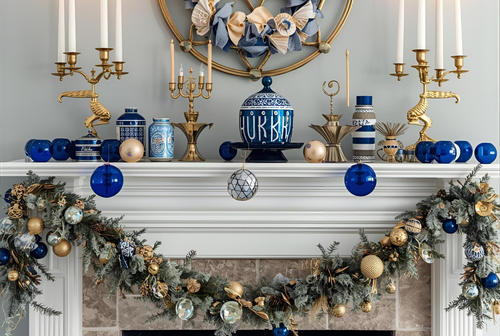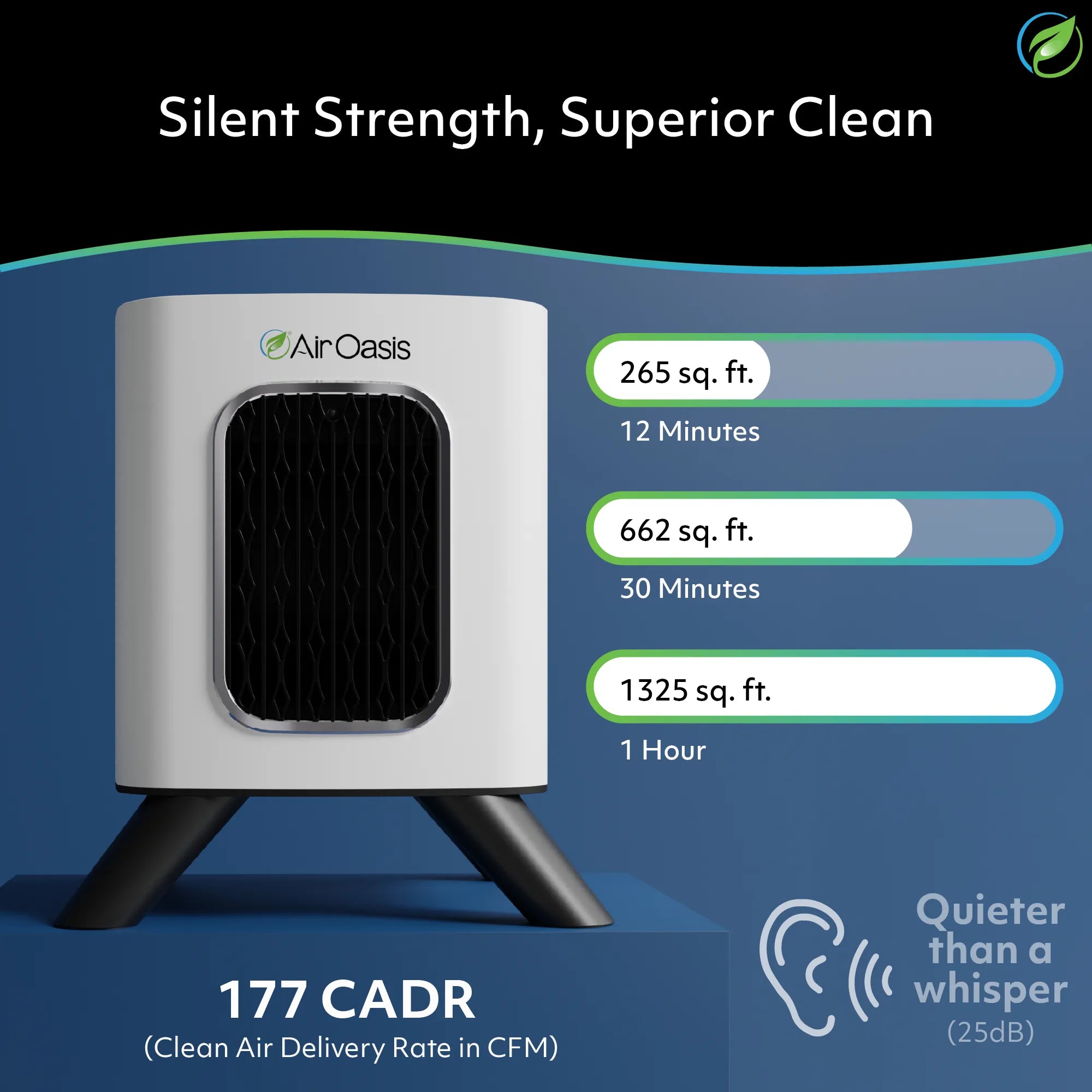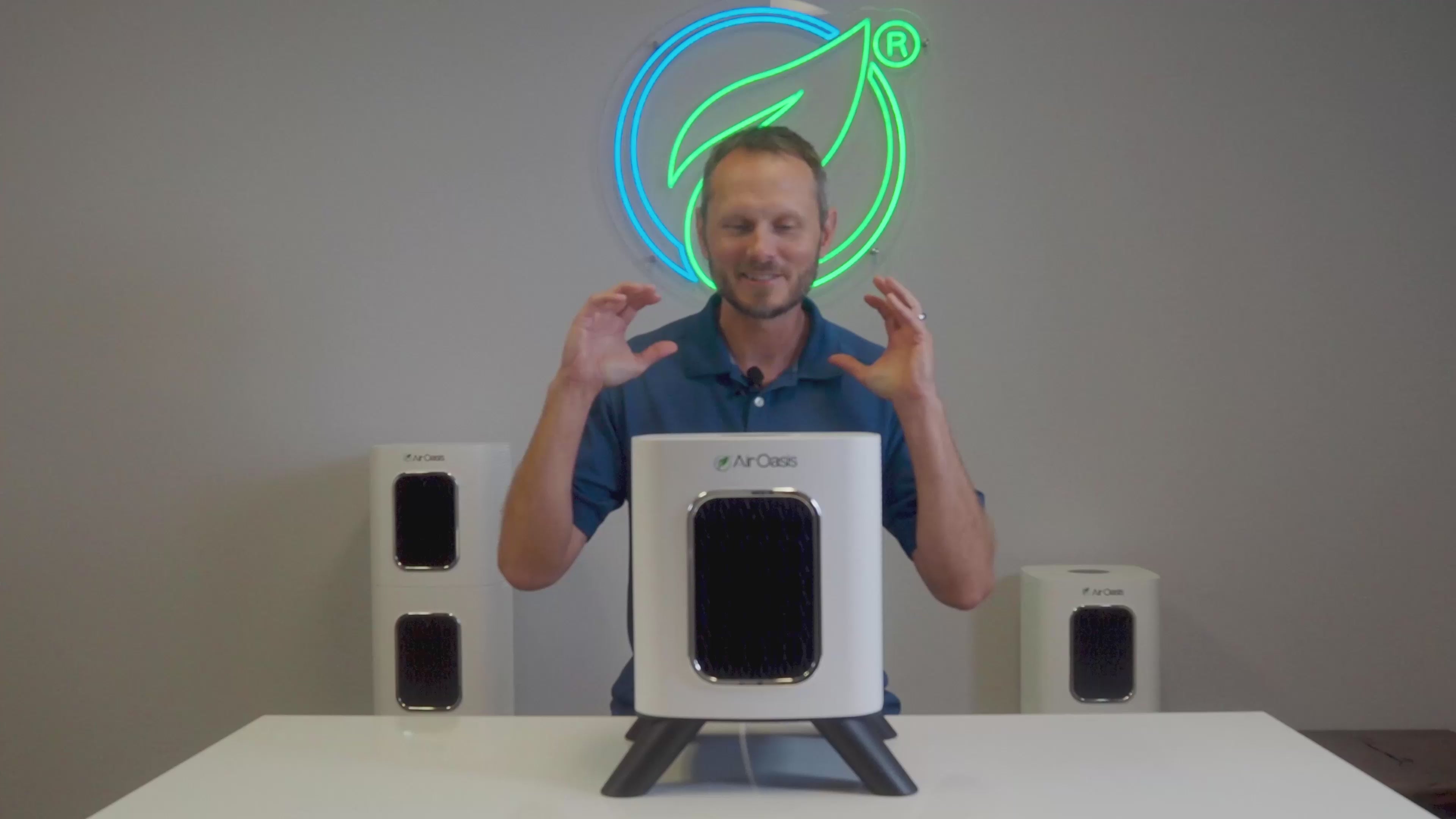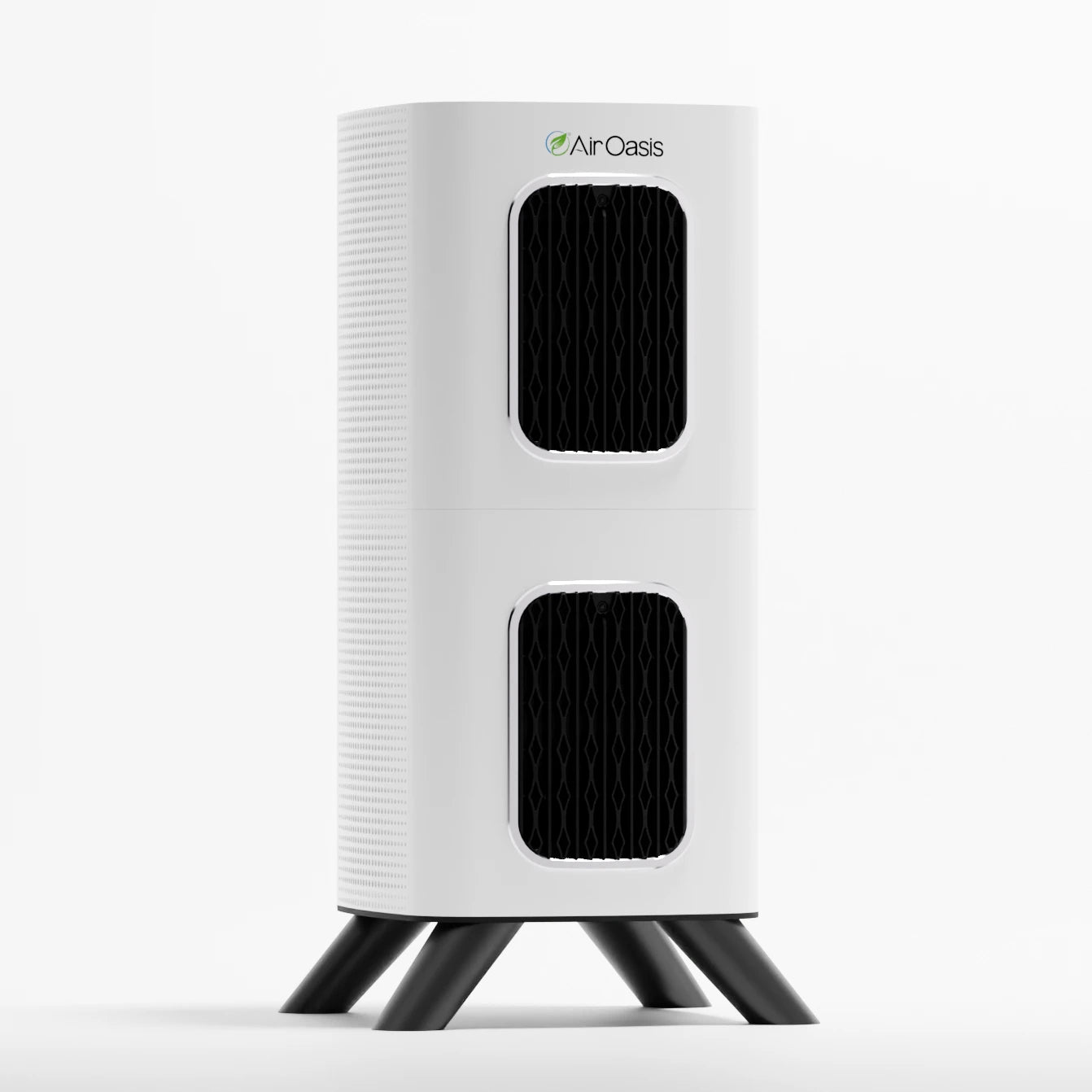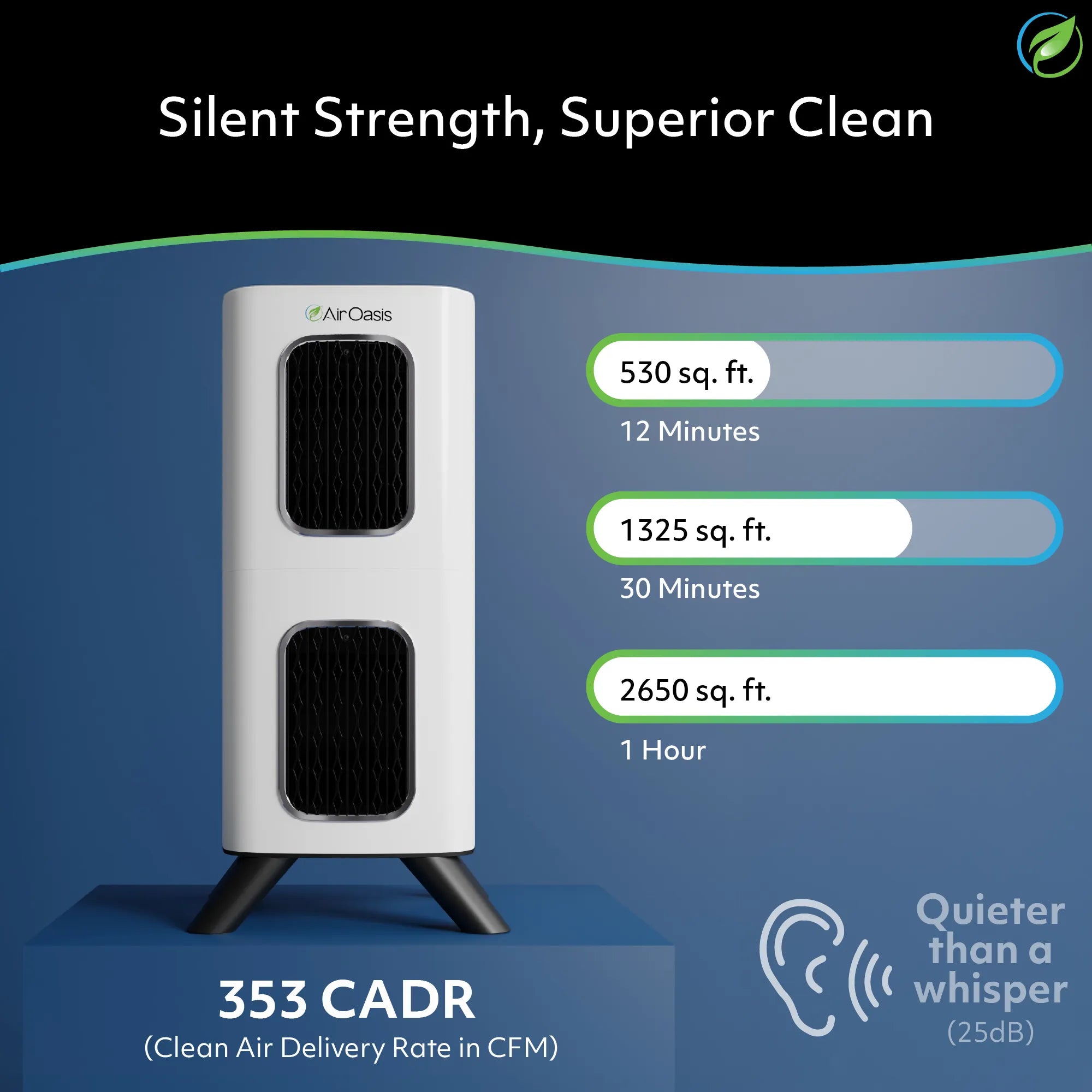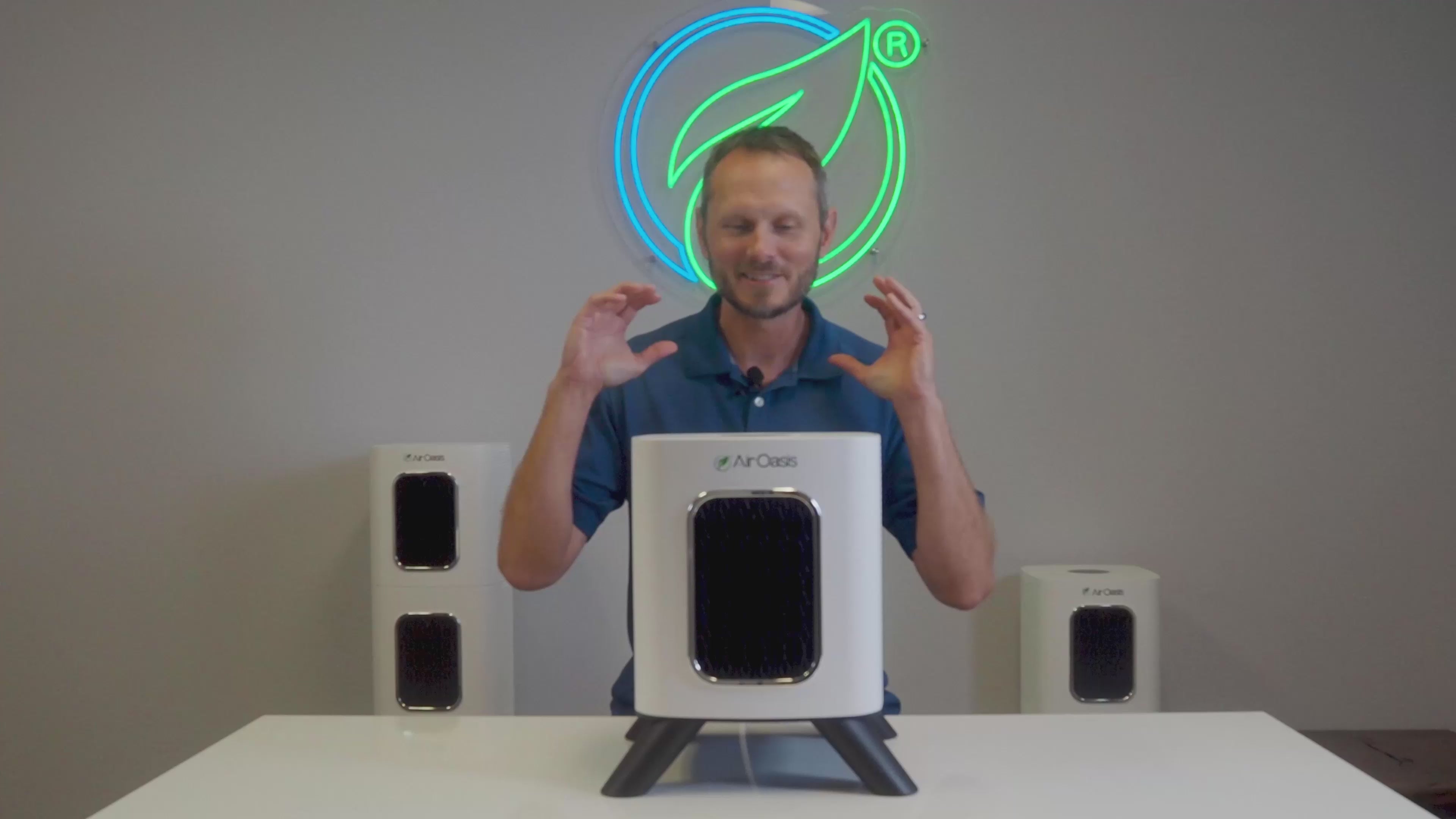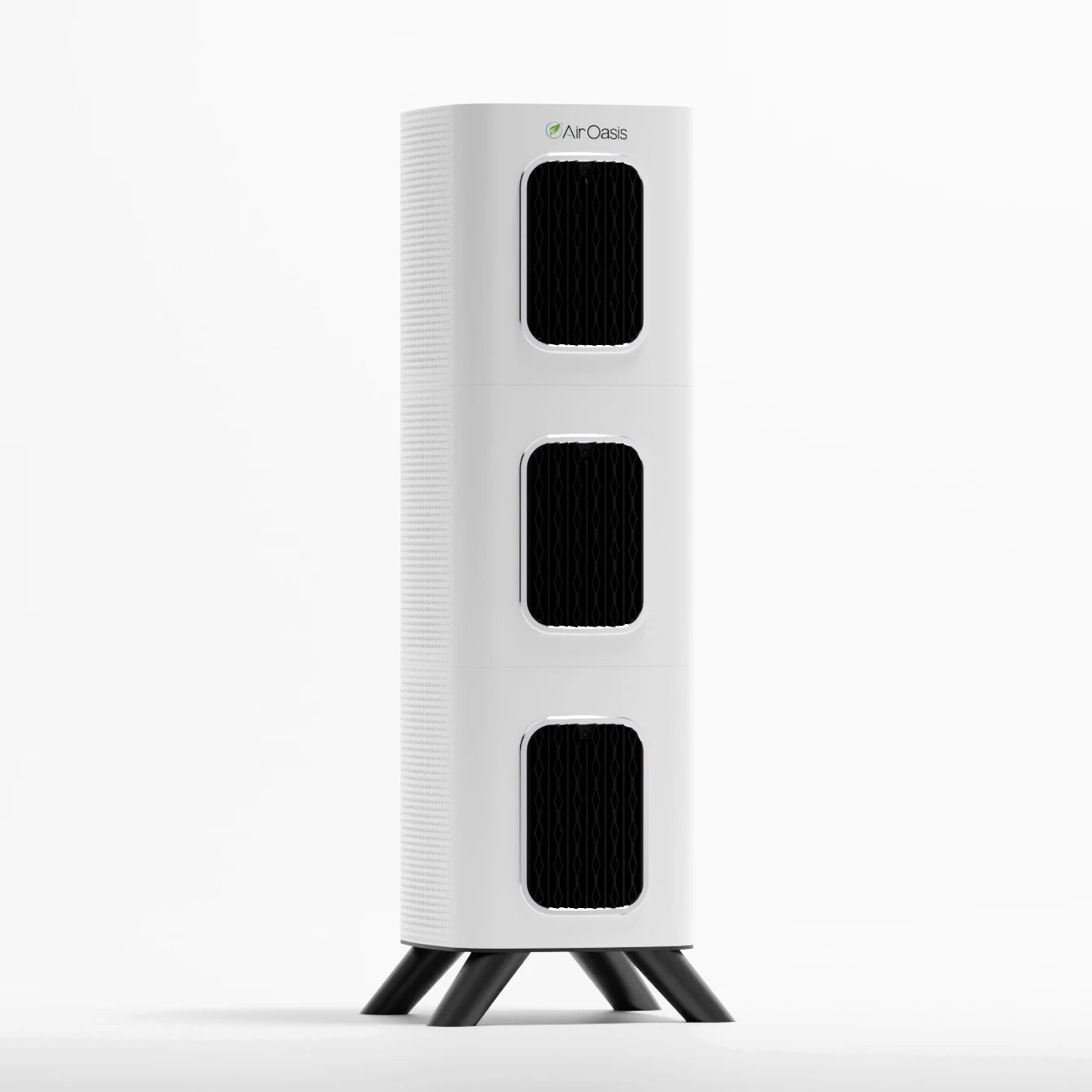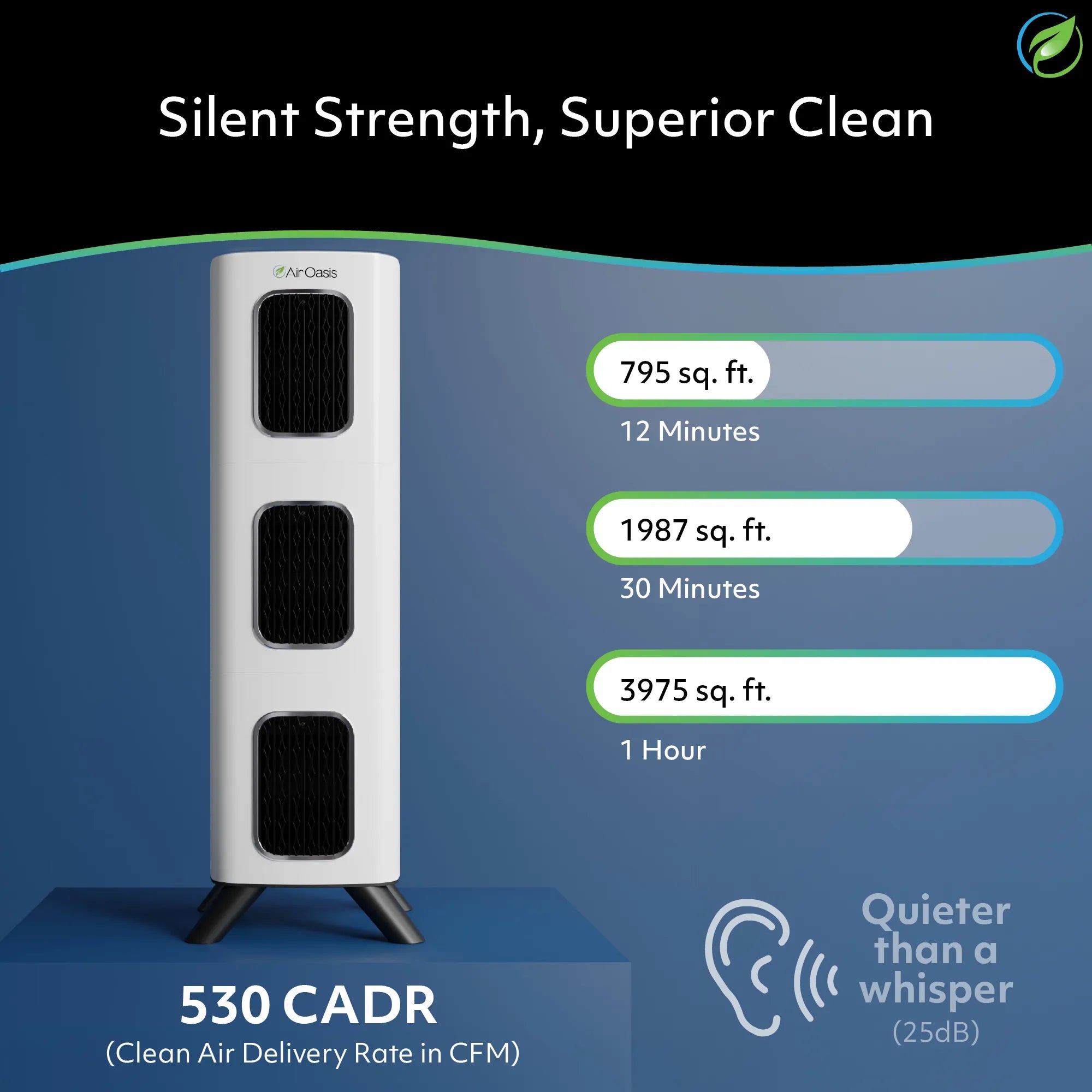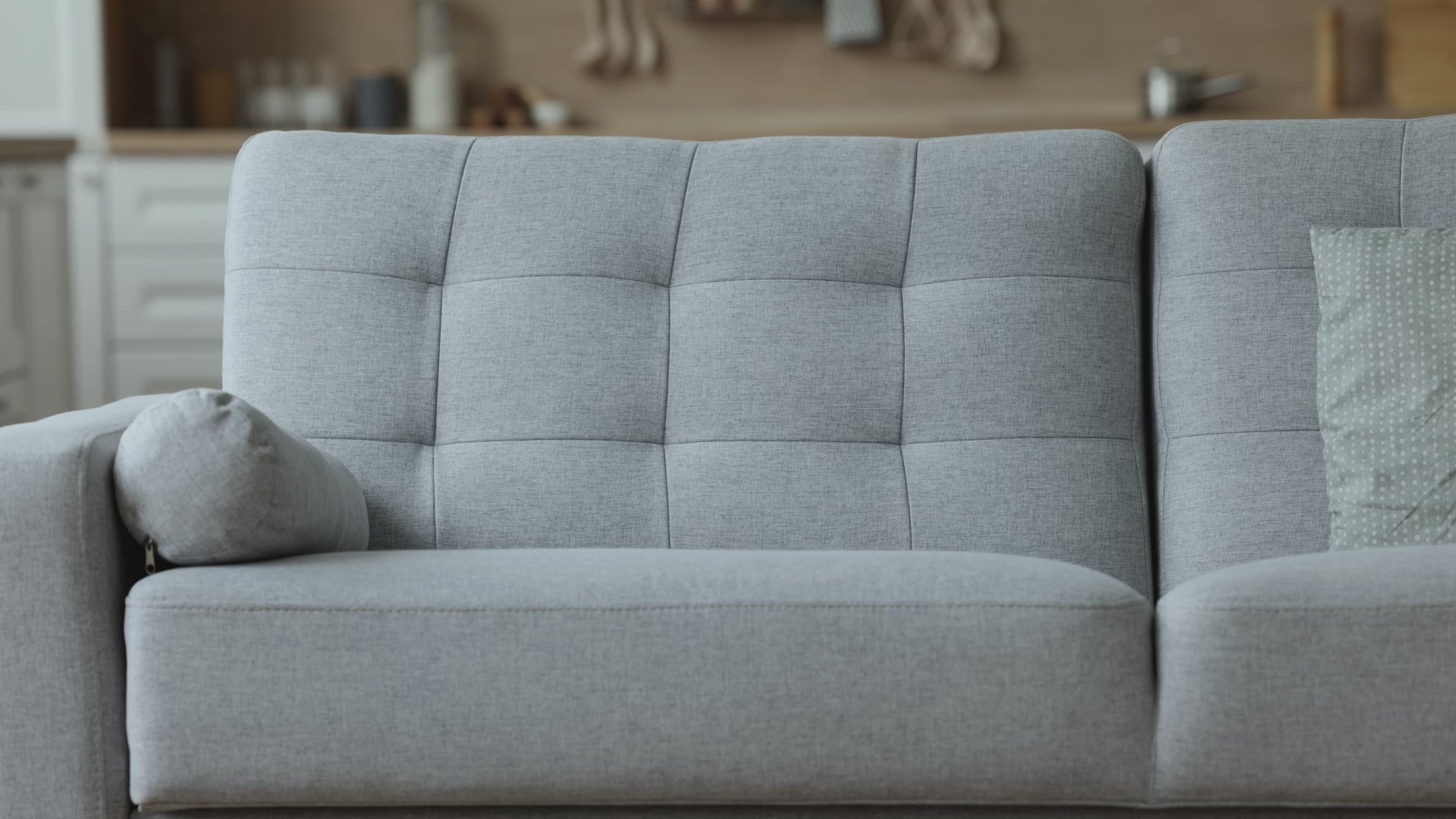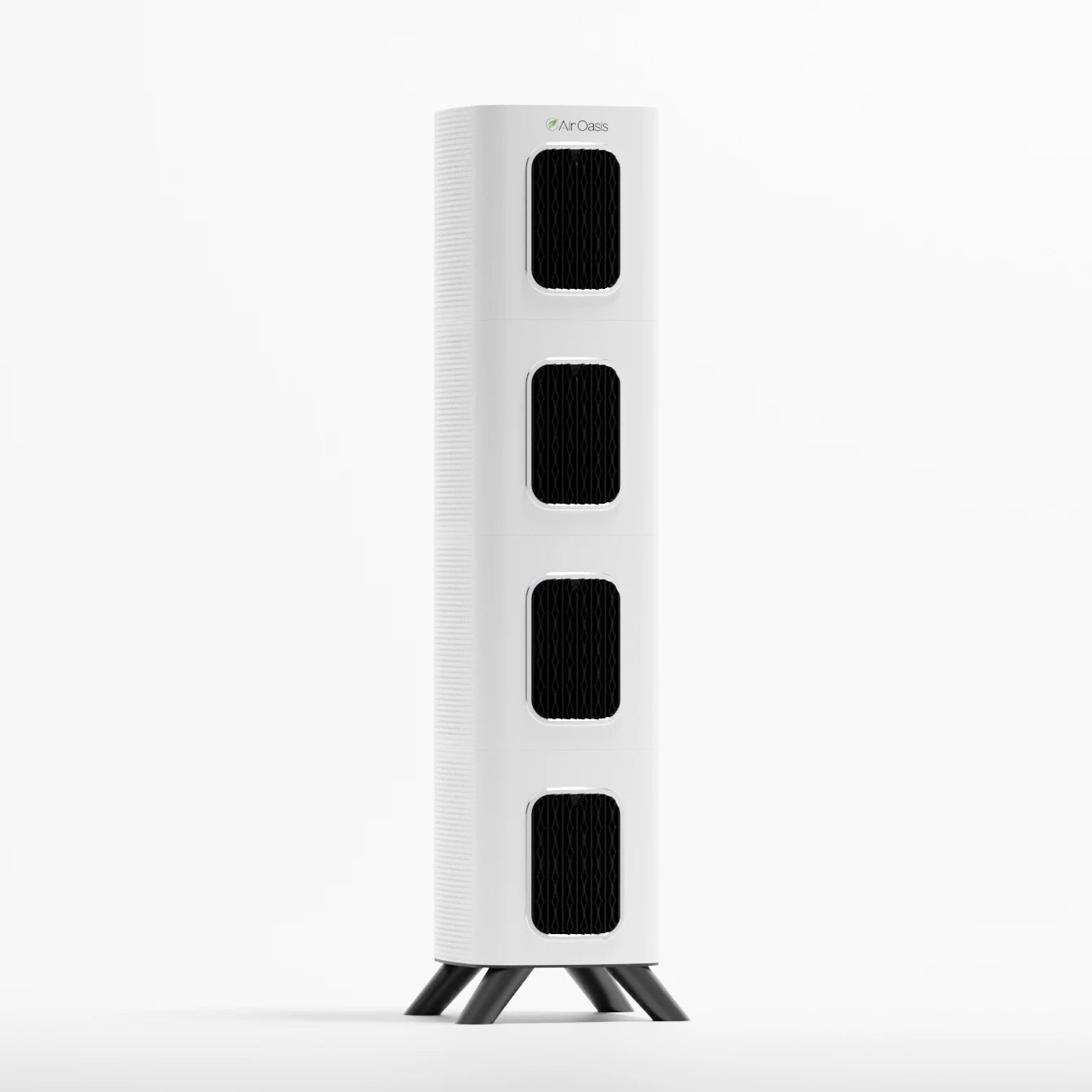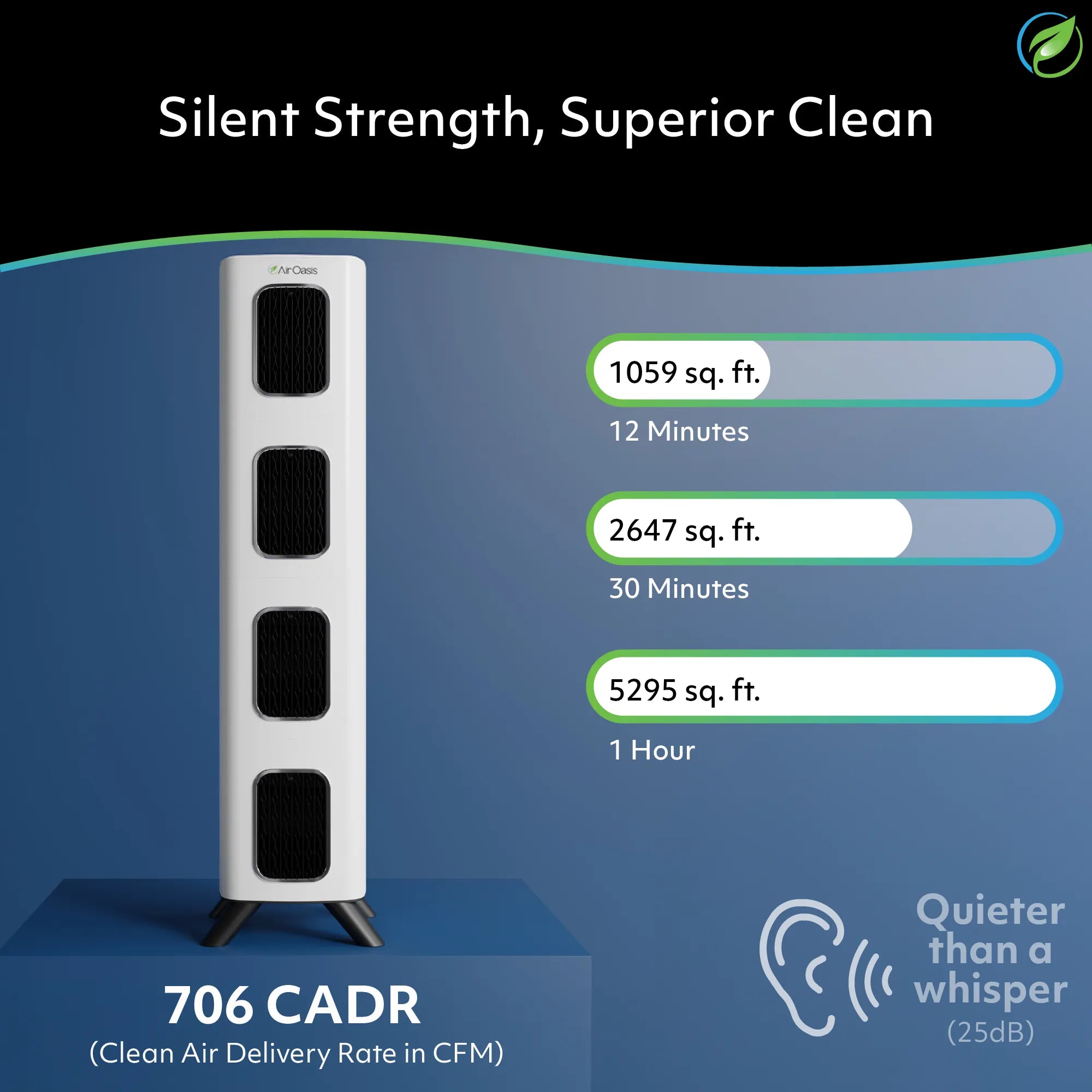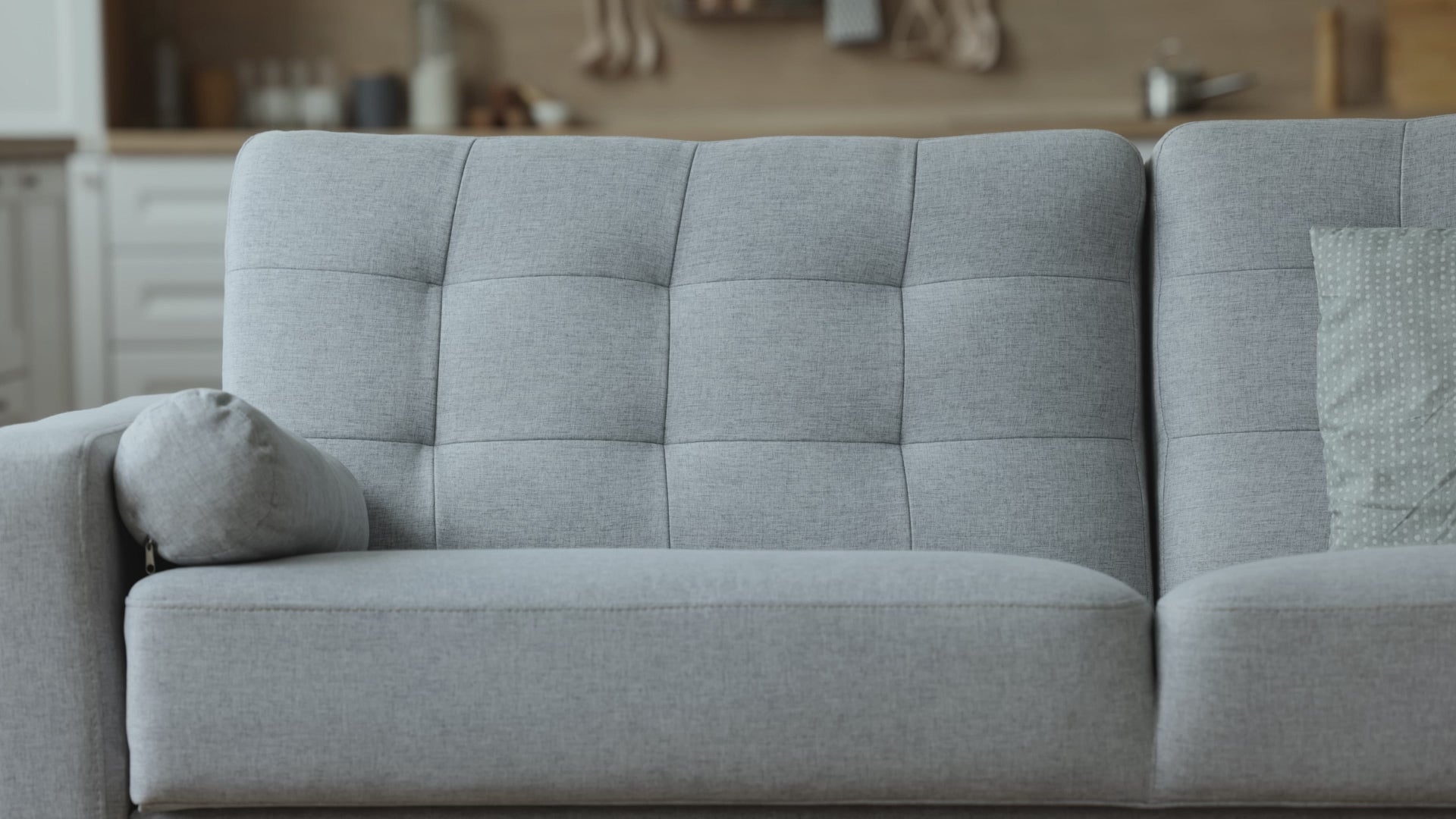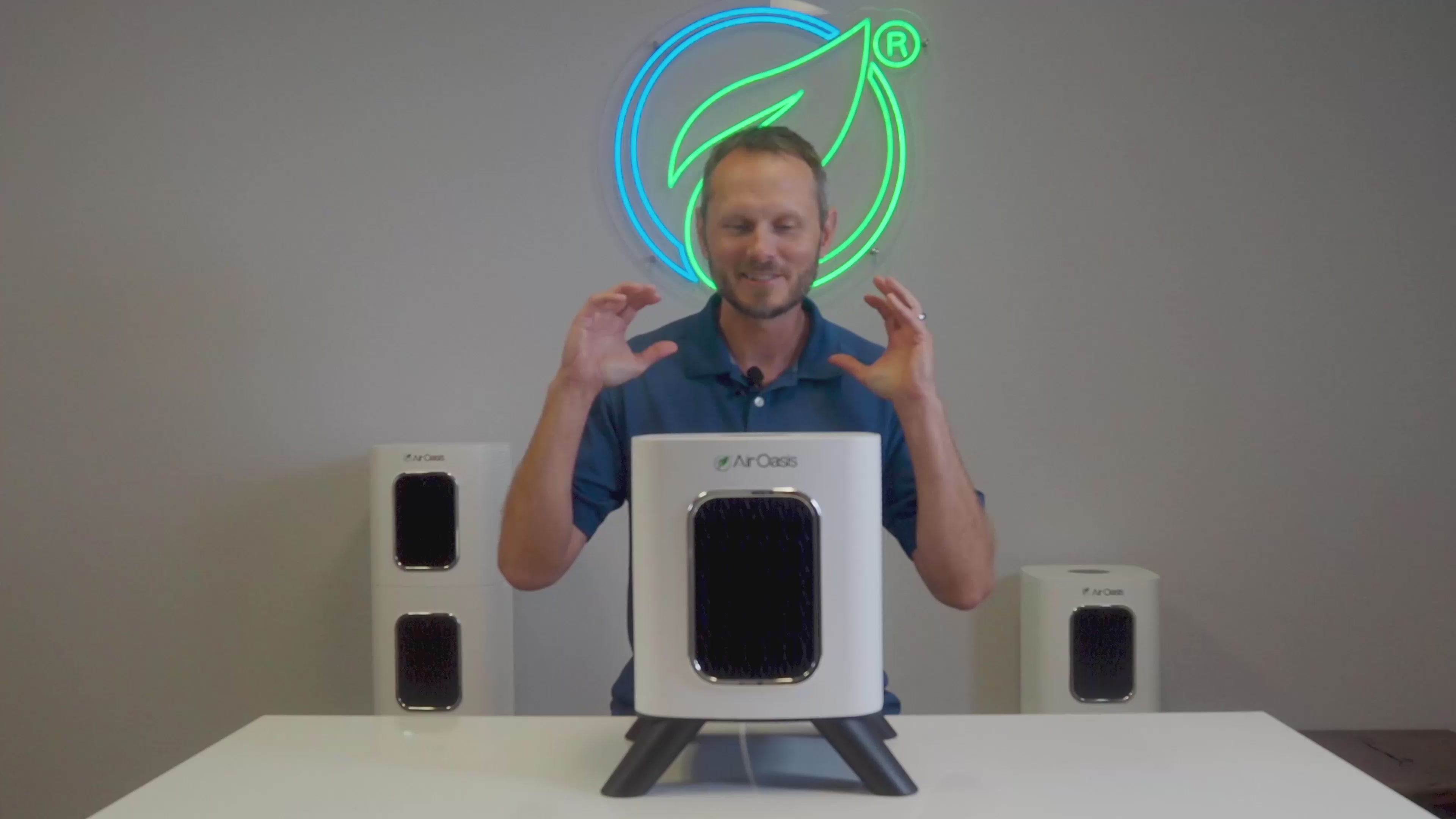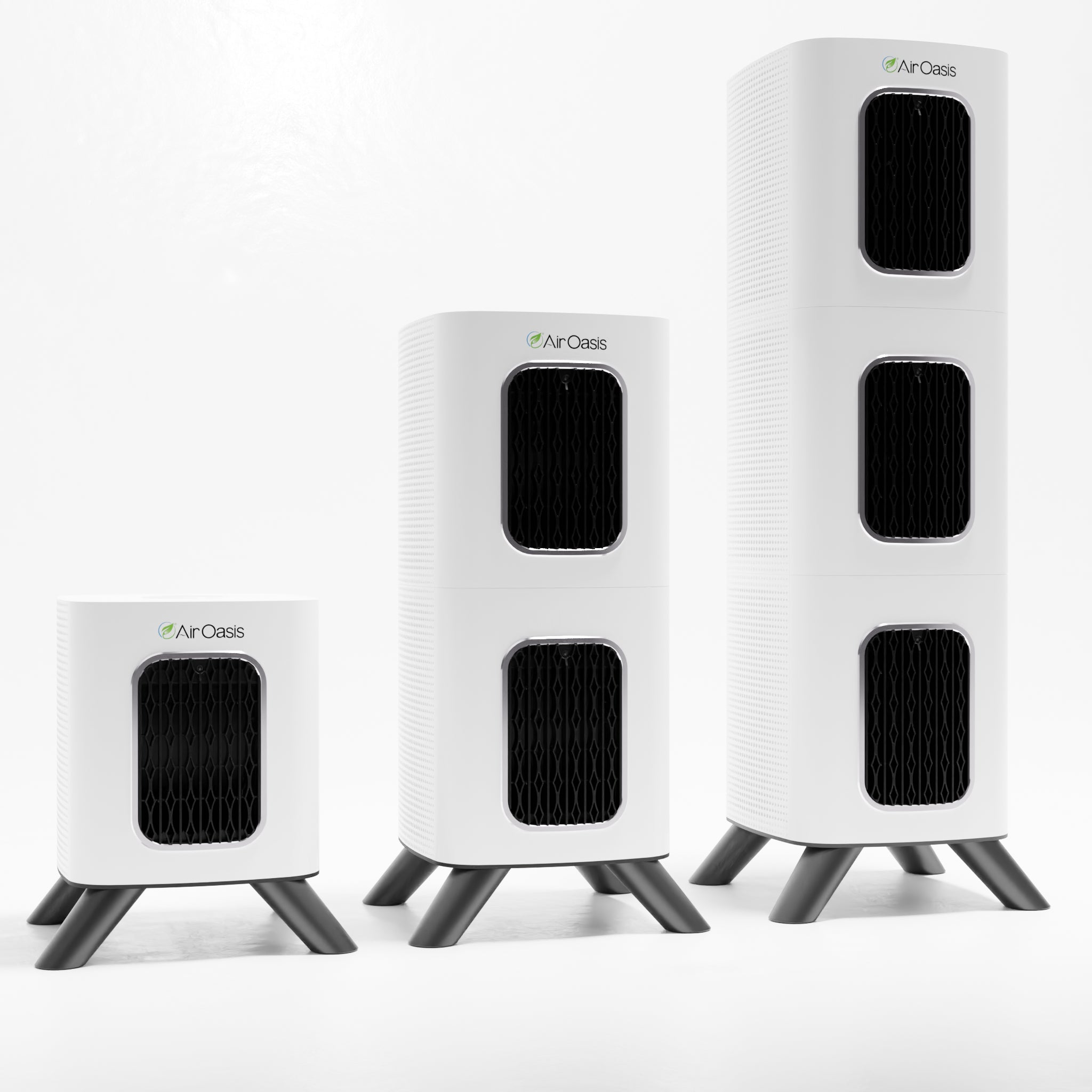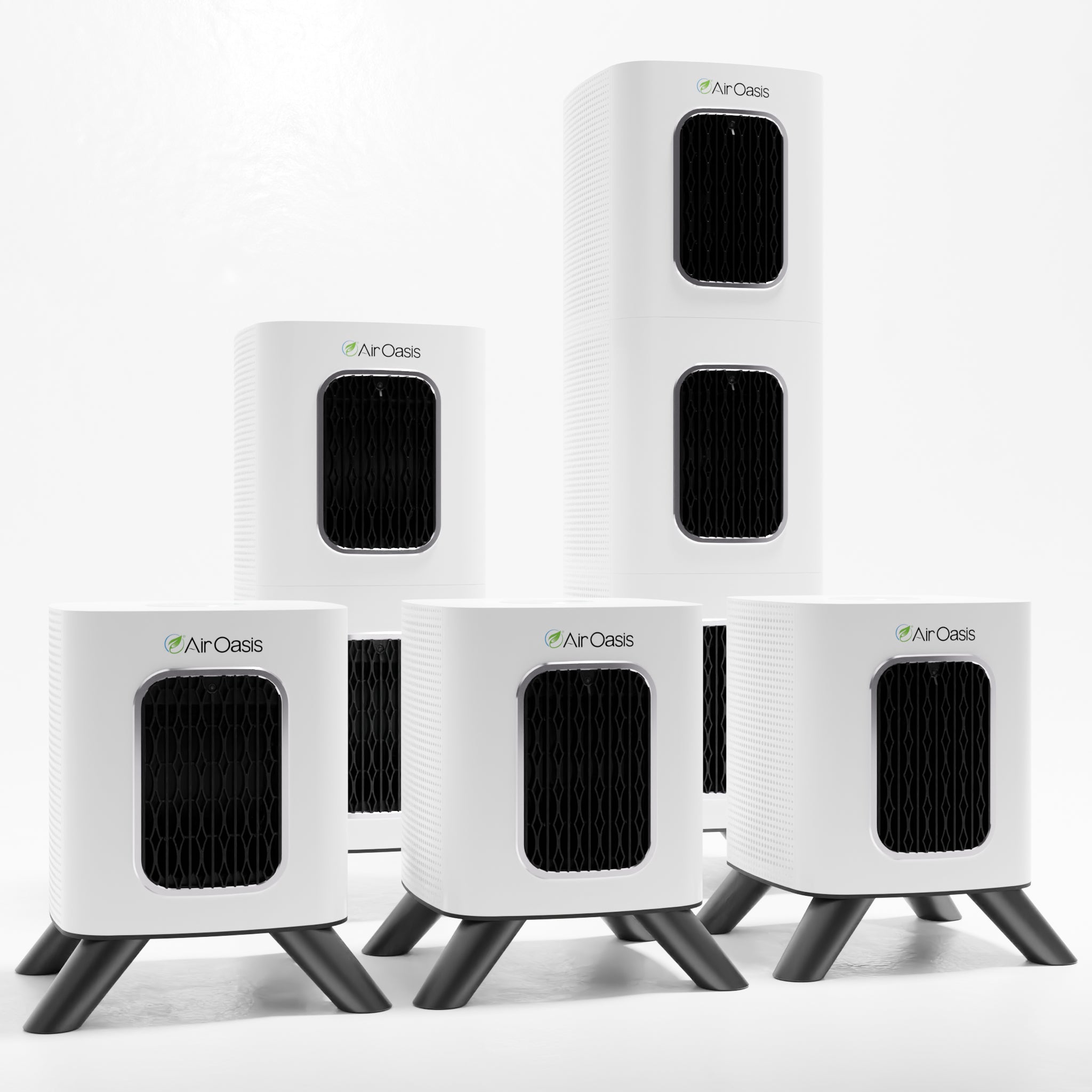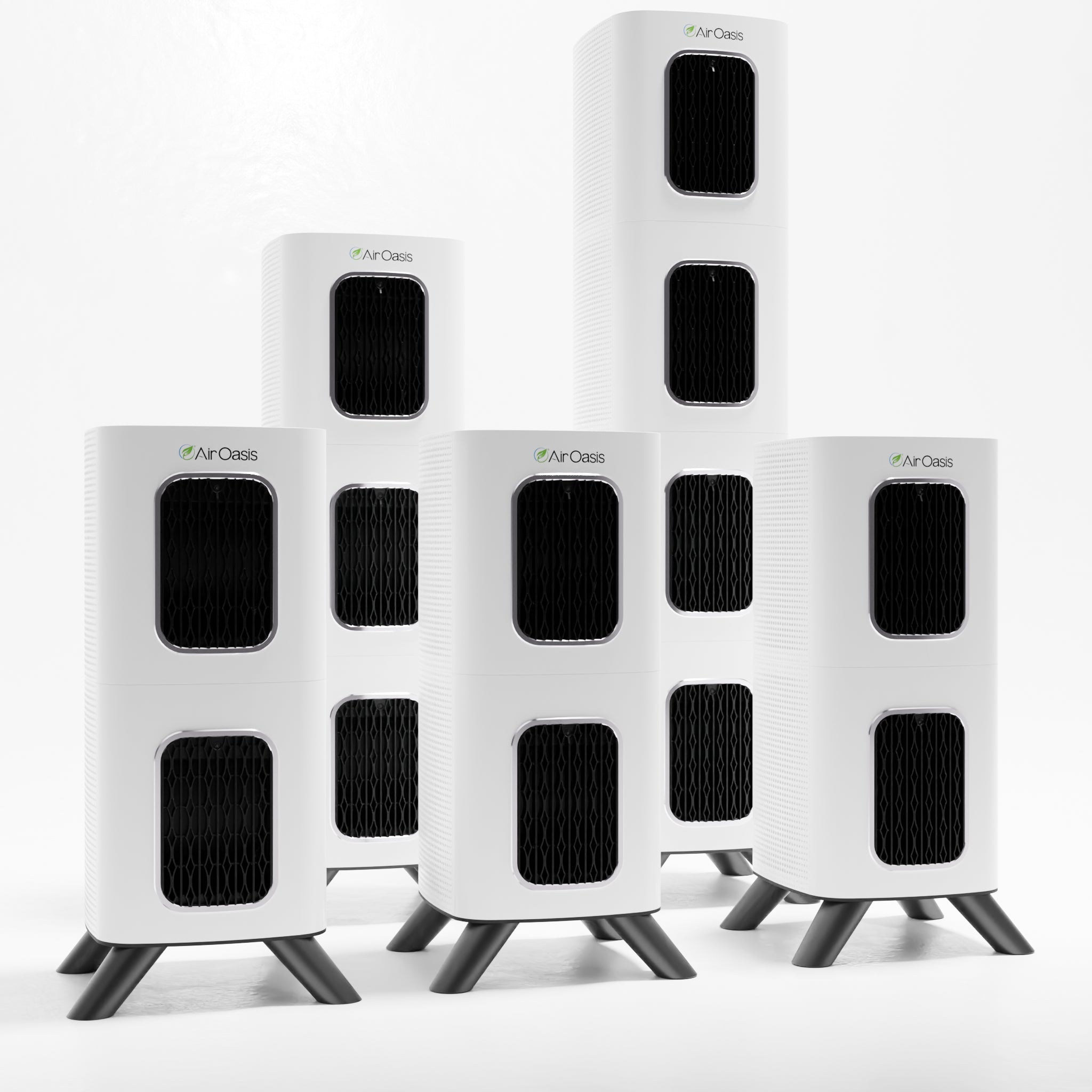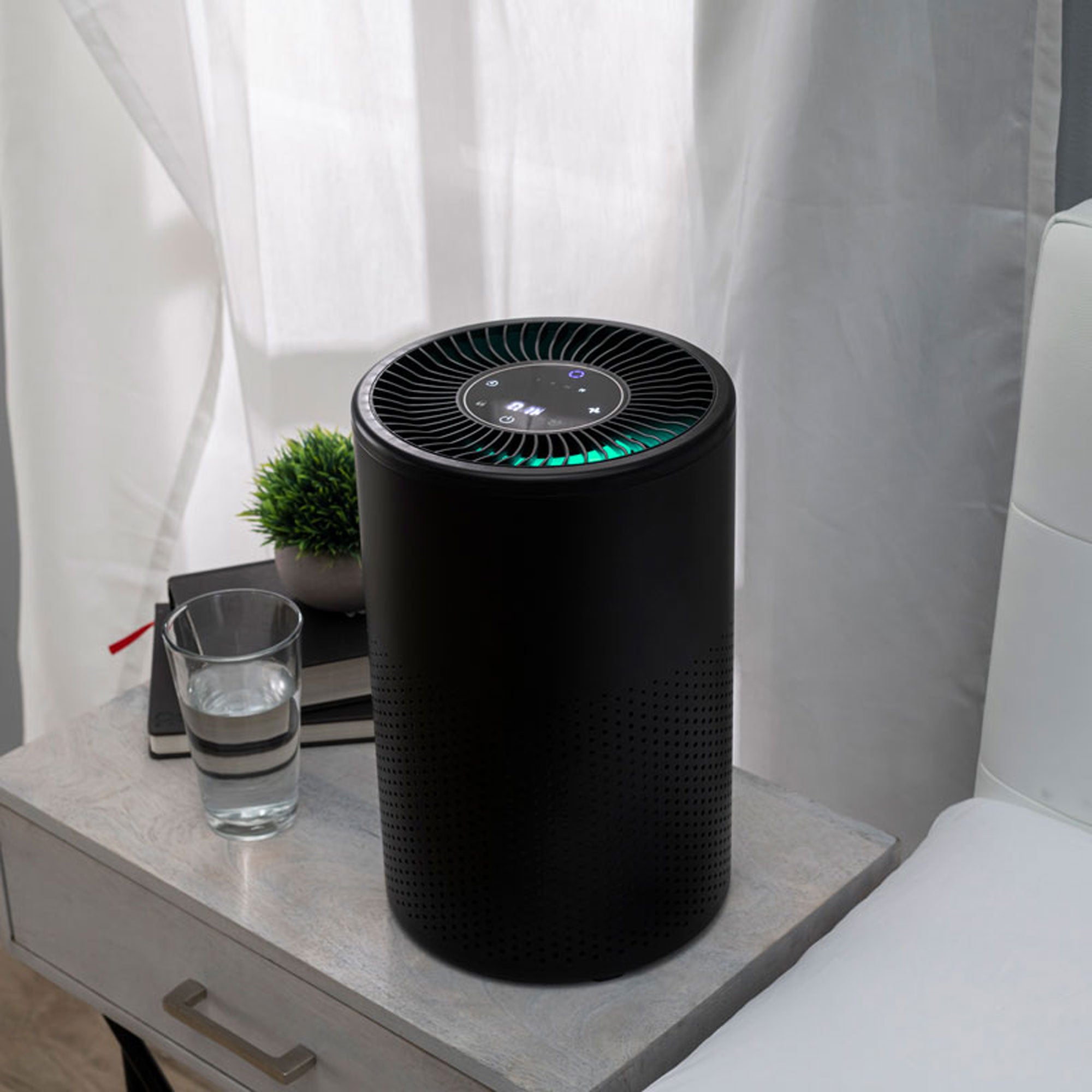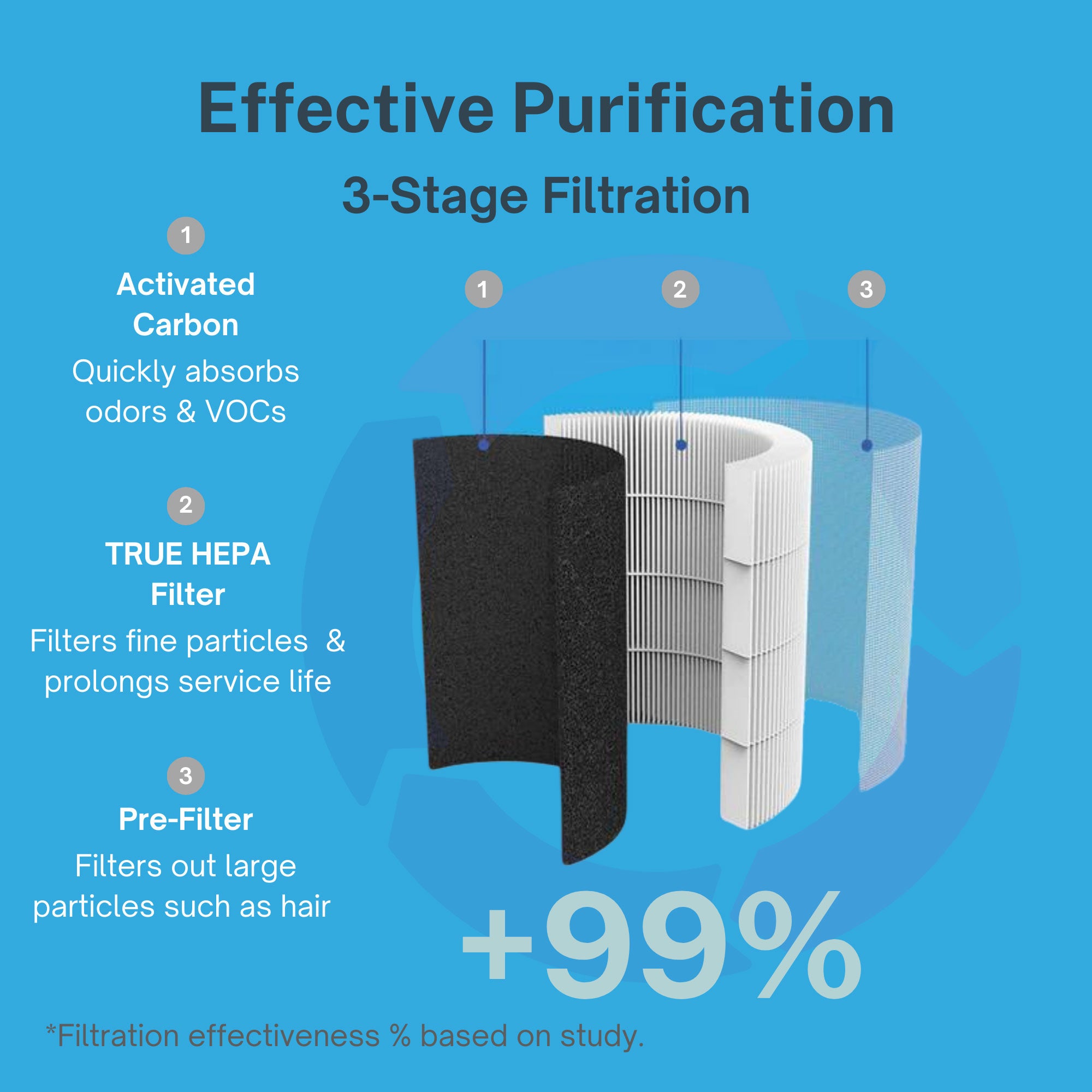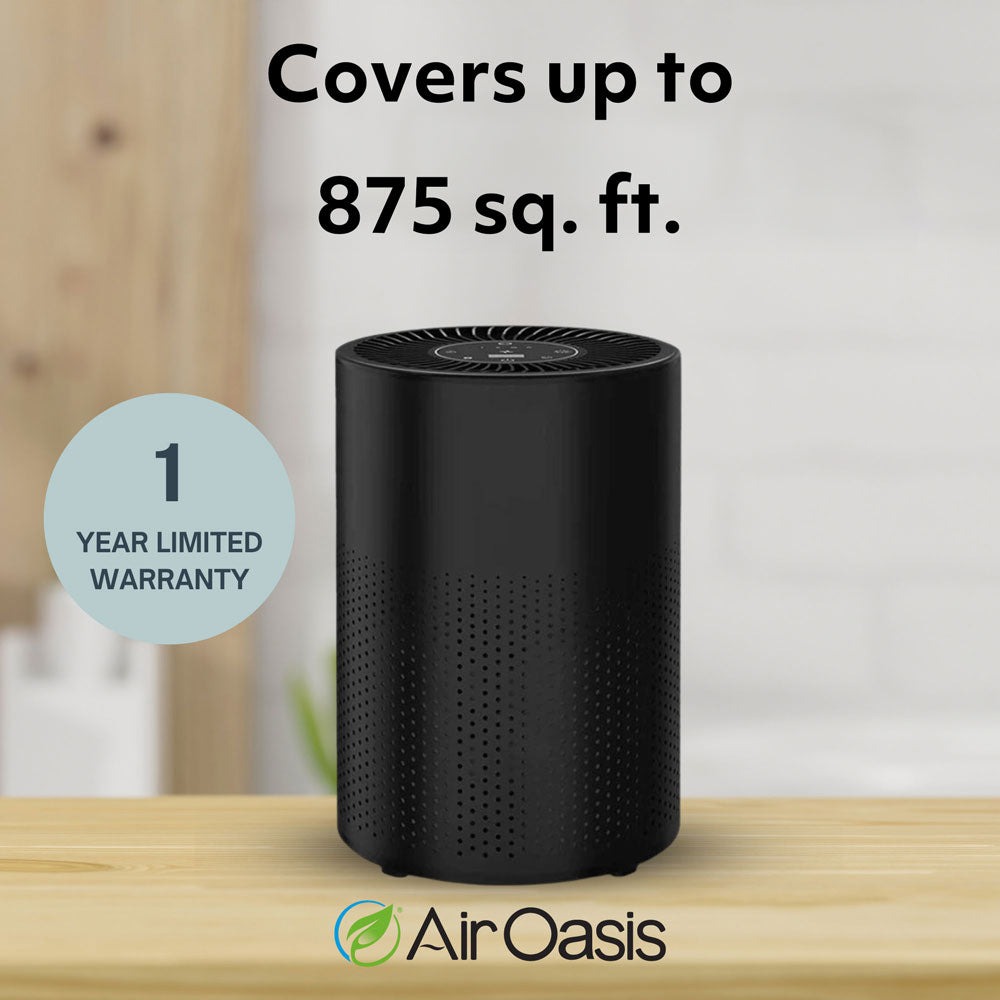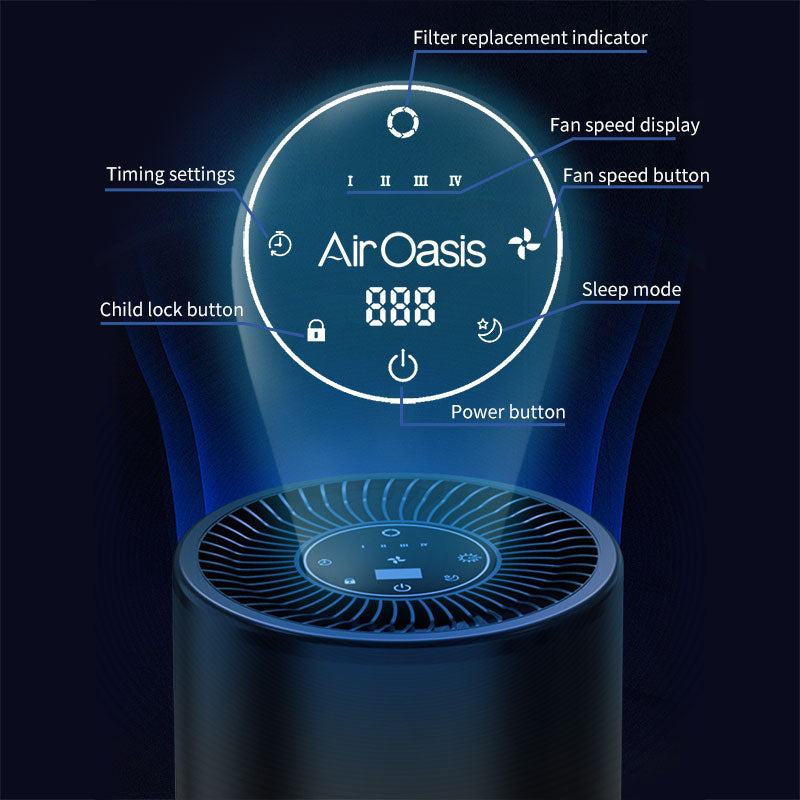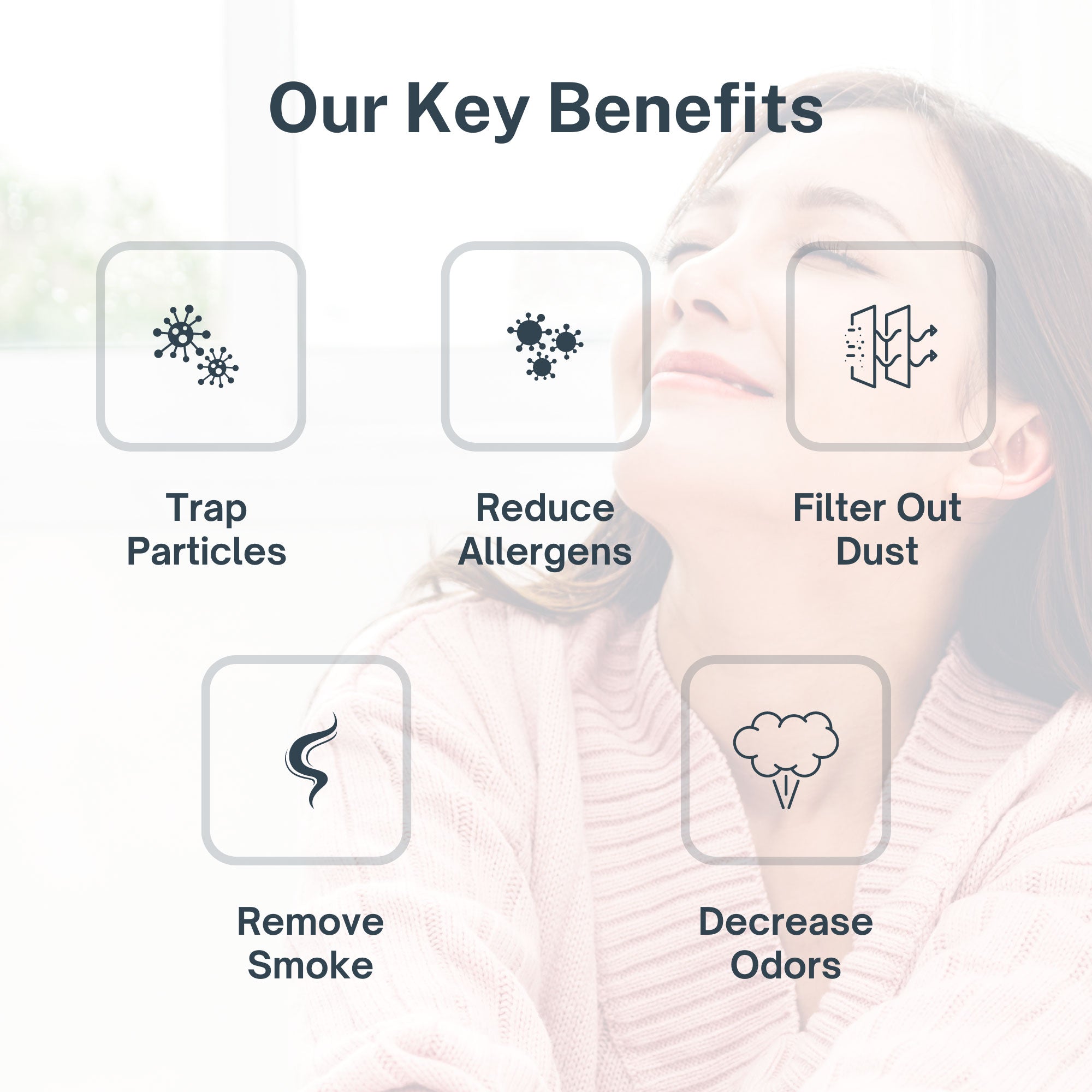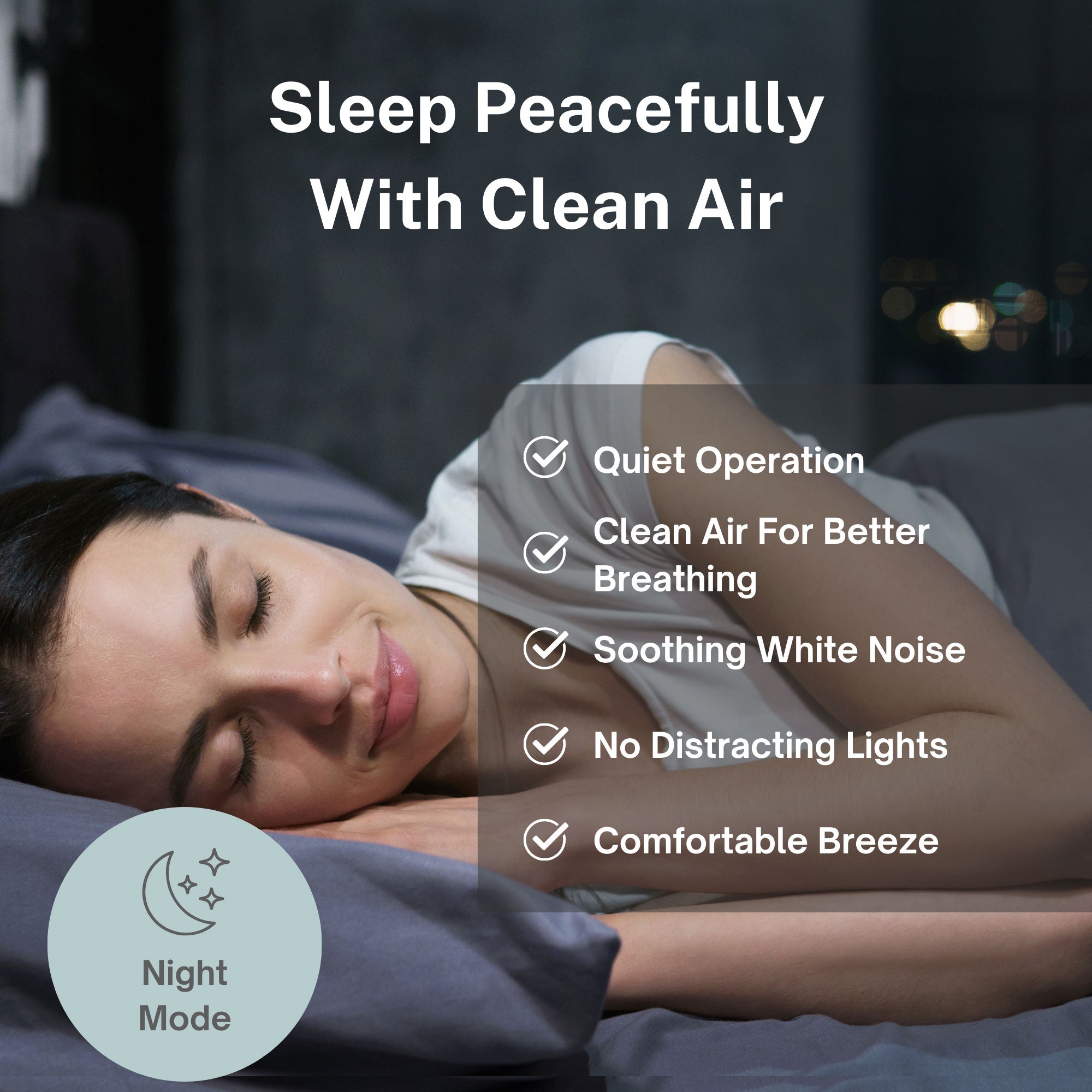Holiday wish lists used to feature toys, electronics, and decorative items. This year, parents are requesting something different—air purifiers. These practical wellness products top lists alongside requests for practical household items. The shift reflects growing awareness that indoor air quality directly affects children's health, development, and wellbeing. Parents aren't asking for luxuries. They're asking for tools that protect their families every single day.
The Reality of Raising Kids Indoors
Children spend approximately 90% of their time indoors between home, school, and extracurricular activities. They breathe whatever air fills these spaces hour after hour, day after day. Unlike adults who developed in cleaner air decades ago, today's children grow up breathing indoor pollution from the moment they come home from the hospital.
Parents can't control the air quality at school or daycare. They can't eliminate outdoor pollution from traffic and industry. But they can create clean air sanctuaries at home where children spend evenings, nights, and weekends. Air purification represents the one environmental factor fully within parental control.
This sense of control appeals to parents who feel helpless in the face of broader environmental threats. Climate change, wildfire smoke, and industrial emissions—these problems feel overwhelming and beyond individual influence. Air purification offers tangible protection for children against threats in their own homes right now.
Children Are More Vulnerable Than Adults
Kids breathe faster than adults, taking more breaths per minute and inhaling more air per unit of body weight. This means they receive higher doses of whatever pollutants exist in indoor air. A contamination level that barely affects adults can significantly impact children's developing systems.
Children's immune systems are still maturing. They haven't developed the robust responses adults have to fight off pathogens and process toxins. Exposure to air pollution during these critical developmental years affects long-term health outcomes in ways that adult exposure doesn't.
The respiratory system continues to develop through adolescence. Exposure to air pollution during childhood increases the risk of asthma, allergies, and reduced lung capacity that persist into adulthood. Parents understand that protecting their children's airways now prevents problems they will face for decades.
Brain development is particularly vulnerable to air pollution. Studies link poor air quality to cognitive impacts, behavioral problems, and reduced academic performance. Parents want their children to reach their full potential without environmental factors limiting development.
The Sick Kid Cycle Exhausts Families
Parents know the pattern intimately. One child brings home a cold from school. Within days, siblings get sick. Then, parents catch it. The entire household cycles through illness for weeks. Lost work days pile up. Medical bills accumulate. Sleep deprivation intensifies as sick children wake throughout the night.
Airborne virus transmission drives this cycle. When a family member coughs or sneezes, viral particles are dispersed into the air. Without purification, these pathogens circulate through the home for hours, finding new hosts. Air purifiers with UV-C technology neutralize these viruses before they infect other family members.
The reduction in illness frequency alone justifies the cost of an air purifier for many parents. Fewer sick days mean less missed work and lost income. Fewer doctor visits reduce medical expenses and copays. Better sleep when children aren't coughing all night improves everyone's functioning.
Parents with children in daycare face near-constant illness exposure. These environments harbor high concentrations of viral and bacterial loads from multiple children in close quarters. Kids come home carrying infections daily. Air purification at home provides the only barrier preventing household-wide illness every few weeks.
Allergy and Asthma Prevalence Continues Rising
Childhood allergies and asthma rates have increased dramatically over recent decades. More children than ever struggle with respiratory conditions requiring daily management. Parents watch their kids use inhalers, take antihistamines, and miss activities because breathing becomes difficult.
Indoor allergens trigger most childhood allergy and asthma symptoms. Dust mites in bedding, pet dander from family animals, mold spores from humidity, and seasonal pollen tracked indoors all contribute to constant low-level inflammation. This inflammation makes children miserable and can escalate into serious attacks requiring emergency care.
Medical-grade HEPA filtration removes 99% of these allergens before children breathe them. Parents see dramatic improvements—fewer nighttime coughing fits, reduced morning congestion, better participation in physical activities, and decreased inhaler use. These observable benefits make air purifiers feel essential rather than optional.
Children with diagnosed conditions obviously need air purification. But parents of healthy children increasingly recognize that prevention matters too. Creating low-allergen environments now may help prevent the development of sensitivities later. It's easier to maintain respiratory health than restore it after problems emerge.
Sleep Quality Affects Everything
Well-rested children behave better, learn more effectively, and regulate emotions successfully. Sleep-deprived children struggle with focus, exhibit behavioral problems, and perform poorly academically. Parents desperate for better behavior and school performance often discover sleep quality is the underlying issue.
Poor air quality disrupts children's sleep in multiple ways. Allergens cause congestion, making breathing difficult. Irritants trigger coughing throughout the night. Dust and dander create subtle inflammation that prevents deep restorative sleep stages. Children wake frequently without an obvious cause—the cause is contaminated air.
Air purification removes these sleep disruptors. Children breathe more easily lying down. Nighttime coughing decreases. They reach deeper sleep stages and wake refreshed. Parents notice improved morning moods, better focus at school, and reduced behavioral issues—all stemming from better sleep in cleaner air.
Parents' own sleep improves too. When children sleep soundly through the night, parents get uninterrupted rest. The entire household functions better. Improved family dynamics, reduced stress, and better parent-child relationships often follow improved sleep quality for everyone.
The Pet Dilemma Finds a Solution
Families love their dogs and cats. Children bond with pets, learning responsibility and empathy. But pet dander triggers allergies in many family members. Parents face impossible choices between their children's health and beloved family animals.
Air purification allows families to keep pets without sacrificing respiratory health. HEPA filtration captures pet dander before it reaches sensitive airways. Activated carbon absorbs pet odors that permeate homes. Families enjoy their animals without the constant sneezing, itchy eyes, and congestion that previously made pet ownership miserable for allergy sufferers.
This solution particularly appeals to parents who grew up without pets due to allergies. They want their children to experience the joy and developmental benefits of pet ownership without the health consequences. Air purifiers make this possible in ways previous generations couldn't achieve.
Multiple pets compound dander problems exponentially. Families with both dogs and cats, or multiple animals of the same species, generate allergen levels that overwhelm standard cleaning efforts. Robust air purification is the only effective intervention that enables comfortable coexistence with multiple pets.
Long-Term Health Investment Mindset
Modern parents think differently about health investments than previous generations. They prioritize prevention over treatment. They research environmental health impacts. They understand that small daily exposures accumulate into significant long-term consequences.
This mindset shift makes air purifiers appealing as foundational health infrastructure rather than reactive medical equipment. Parents view them like water filtration—basic environmental protection that ensures children aren't chronically exposed to contaminants in the essential resources they constantly consume.
The cost-benefit analysis overwhelmingly favors air purification. A quality air purifier costs less than a few emergency room visits for asthma attacks. It costs less than the days missed from work spent staying home with sick children. It costs less than years of allergy medications and specialist appointments. The upfront investment prevents much larger downstream expenses.
Parents also consider the immeasurable value of children's comfort and quality of life. Reducing suffering matters even when it doesn't prevent diagnosed illness. Children who breathe easily, sleep well, and feel healthy experience childhood differently than children constantly dealing with respiratory symptoms. That difference has value beyond dollars.
The Practical Holiday Wish List Request
Air purifiers make perfect holiday gifts because they're expensive enough that parents hesitate to buy them on their own, but practical enough that they genuinely want them. They fall into the category of "would really improve our lives but feels too indulgent to purchase for ourselves."
Requesting air purifiers as gifts removes the guilt factor. Parents can justify asking relatives to contribute to something benefiting the whole family rather than requesting personal luxuries. Grandparents, aunts, uncles, and close friends appreciate gift suggestions that meaningfully help rather than adding to toy clutter.
The timing works well, too. The winter respiratory illness season peaks during the holidays. Families gather indoors with poor ventilation. Gift-giving coincides with the time when air purification delivers maximum value. Parents receive purifiers right when they need them most.
Multiple family members can contribute toward a single high-quality purifier. Rather than receiving several modest gifts, parents prefer pooling resources for one substantial wellness investment. This collaborative gifting approach works well for premium air purification systems costing several hundred to over a thousand dollars.
Choosing the Right System for Growing Families
Parents need air purifiers that scale with their household's changing needs. Nursery purifiers follow children into grade-school bedrooms and eventually into teenage spaces. Living room purifiers serve families for years through different developmental stages. Durability and longevity matter when purchasing for children who will use products for decades as they grow.
Size considerations reflect family living patterns. Smaller homes and apartments need appropriately sized units to avoid overwhelming small spaces. Larger homes require robust coverage or multiple units to ensure every family space receives protection. The iAdaptAir system offers four sizes to accommodate different family circumstances and square-footage needs.
Smart features appeal to tech-savvy parents managing busy households. Auto mode that adjusts to real-time air quality eliminates the need for constant manual adjustment. App connectivity allows monitoring and control even when traveling or at work. Filter life indicators remove maintenance uncertainty. These conveniences ensure consistent operation despite chaotic family schedules.
Night mode functionality matters critically for children's spaces. Complete darkness supports melatonin production and quality sleep essential for development. Air purifiers that eliminate all light pollution while maintaining purification serve children's physiological sleep needs.
Creating the Healthy Home Children Deserve
Parents can't bubble-wrap their children from every threat. They can't prevent all illnesses or eliminate all environmental exposures. But they can control the air filling their homes, where children spend the majority of their time growing, learning, and developing.
The iAdaptAir system delivers medical-grade purification, designed specifically to address the challenges families face. HEPA filtration removes allergens, pet dander, mold spores, and dust mites. Activated carbon absorbs VOCs from household products and cooking. UV-C light neutralizes viruses and bacteria circulating through the home. Bipolar ionization enhances particle removal for comprehensive protection.
This multi-stage approach addresses the full spectrum of threats affecting children's respiratory health. It's not just about removing one type of pollutant—it's about creating comprehensively clean air that supports healthy development across all dimensions.
Parents putting air purifiers on holiday wish lists aren't being materialistic or frivolous. They're prioritizing their children's health in the most direct way possible. They're asking for tools that protect the most vulnerable members of their families every single day. Shop Air Oasis today and give parents the gift they truly want—clean air for the children they love.



